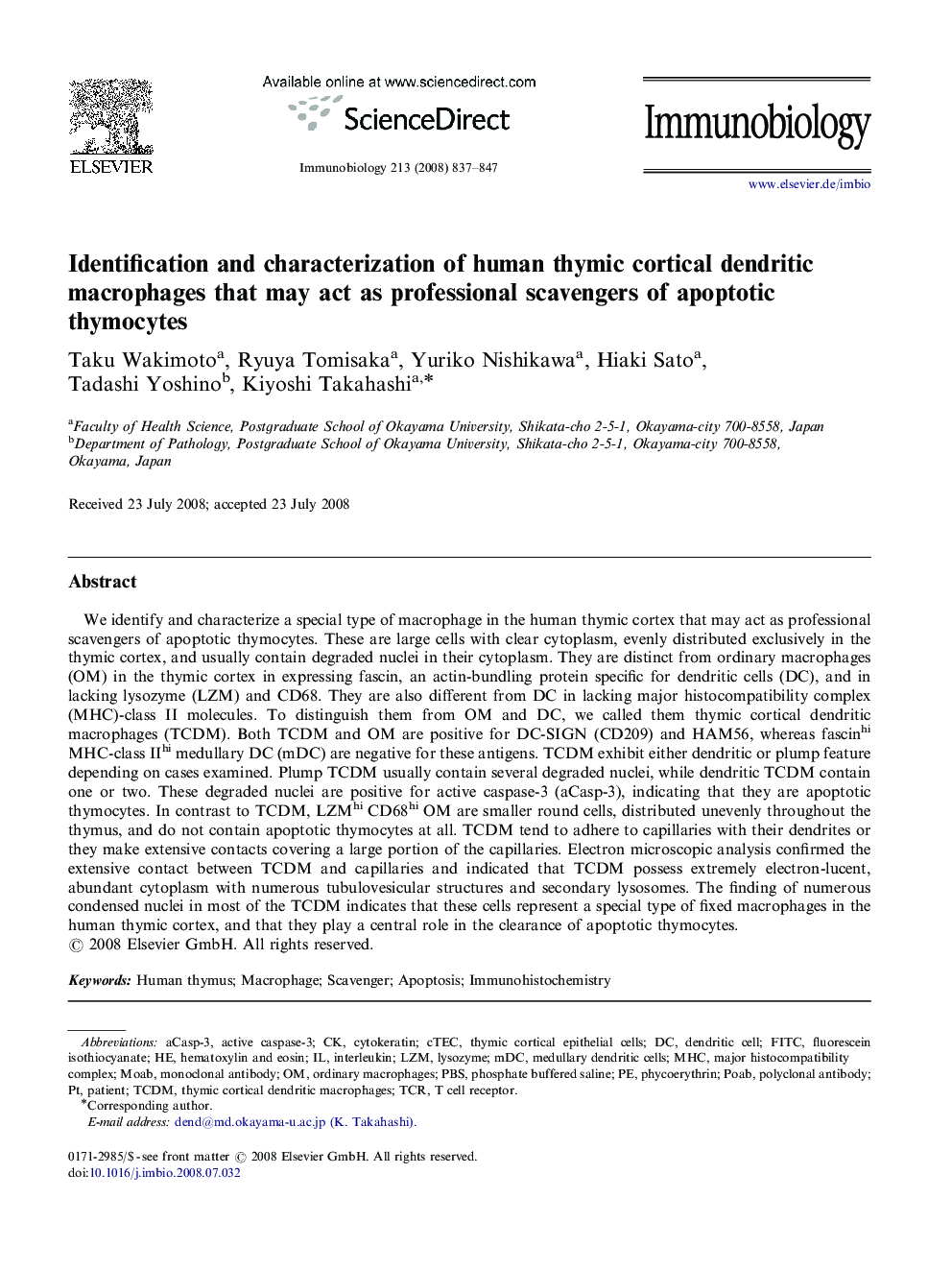| Article ID | Journal | Published Year | Pages | File Type |
|---|---|---|---|---|
| 2183638 | Immunobiology | 2008 | 11 Pages |
We identify and characterize a special type of macrophage in the human thymic cortex that may act as professional scavengers of apoptotic thymocytes. These are large cells with clear cytoplasm, evenly distributed exclusively in the thymic cortex, and usually contain degraded nuclei in their cytoplasm. They are distinct from ordinary macrophages (OM) in the thymic cortex in expressing fascin, an actin-bundling protein specific for dendritic cells (DC), and in lacking lysozyme (LZM) and CD68. They are also different from DC in lacking major histocompatibility complex (MHC)-class II molecules. To distinguish them from OM and DC, we called them thymic cortical dendritic macrophages (TCDM). Both TCDM and OM are positive for DC-SIGN (CD209) and HAM56, whereas fascinhi MHC-class IIhi medullary DC (mDC) are negative for these antigens. TCDM exhibit either dendritic or plump feature depending on cases examined. Plump TCDM usually contain several degraded nuclei, while dendritic TCDM contain one or two. These degraded nuclei are positive for active caspase-3 (aCasp-3), indicating that they are apoptotic thymocytes. In contrast to TCDM, LZMhi CD68hi OM are smaller round cells, distributed unevenly throughout the thymus, and do not contain apoptotic thymocytes at all. TCDM tend to adhere to capillaries with their dendrites or they make extensive contacts covering a large portion of the capillaries. Electron microscopic analysis confirmed the extensive contact between TCDM and capillaries and indicated that TCDM possess extremely electron-lucent, abundant cytoplasm with numerous tubulovesicular structures and secondary lysosomes. The finding of numerous condensed nuclei in most of the TCDM indicates that these cells represent a special type of fixed macrophages in the human thymic cortex, and that they play a central role in the clearance of apoptotic thymocytes.
